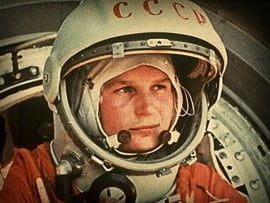Ben Gliniecki reviews “Cosmonauts: Birth of the Space Age”, an exhibition currently running at the Science Museum in London, which is an extraordinary collection of Soviet spacecraft and artefacts – a testament to the fantastic power of a planned economy.
Running until early March 2016, an exhibition at the Science Museum in London titled “Cosmonauts: Birth of the Space Age” is an extraordinary collection of Soviet spacecraft and artefacts that is testament to the fantastic power of a planned economy.
The string of Soviet successes during the space race, including putting the first satellite in space (Sputnik), the first man in space (Yuri Gagarin), the first woman in space (Valentina Tereshkova), the first spacewalk (Alexey Leonov), the first images of the dark side of the moon and various others, are brought to life by artefacts such as the actual spacecraft Vostok 6 flown by Tereshkova and the capsule Vokshod 1, used on the first mission ever to carry more than one crew member.
One of the most striking parts of the exhibition is the cosmological artwork, philosophy and scientific innovation that the 1917 revolution inspired in Russia. Artists such as Chashnik, architects such as Krutikov, and pioneering scientists like Tsiolkovsky are all covered by the exhibition and their work gives a sense of the momentous change and enormous optimism that socialism inspired.
The story of Sergei Korolev is explained throughout the exhibition. Despite being imprisoned during Stalin’s purges in 1938 for six years, he was released and became the foremost rocket engineer and spacecraft designed in the world.
The story of Yuri Gagarin, the first man in space, is covered in detail. Hand-painted banners and the designs of statues in his honour convey the popular excitement surrounding this major technological step forward. A medal presented to Gagarin by the British National Union of Foundry Workers, who invited Gagarin (himself a former steelworker) to Britain after his successful mission, is also on display.
At around the time the USA was putting the first man on the moon, the Soviet space programme was gearing up to build a permanent outpost in space, in the form of a space station. After the fall of the Soviet Union this project became the International Space Station that still operates today. Models and artefacts used by cosmonauts on early versions of the space station are displayed as part of the exhibition.
The breakneck pace of technological innovation that took place in Russia, and which is on display in this exhibition, is all the more incredible when considering the economically backward state of the Russian economy in the early 20th Century, the burden of two world wars and a civil war, as well as the deadweight of bureaucracy from the mid-1920s onwards.
Exploring such a dramatic period of scientific history in this exhibition, one can’t help but wonder what could be achieved today in a modern 21st Century industrialised nation if we were able to rationally plan investment in technology in the interests of the vast majority of people. Space exploration would cease to be the preserve of science fiction or the plaything of the super-rich. Just as the discovery of the New World fuelled the bourgeois revolutions of the past, so the discovery of new worlds and socialist revolution will be the hallmarks of our future. Under such conditions, the sky really is the limit.






